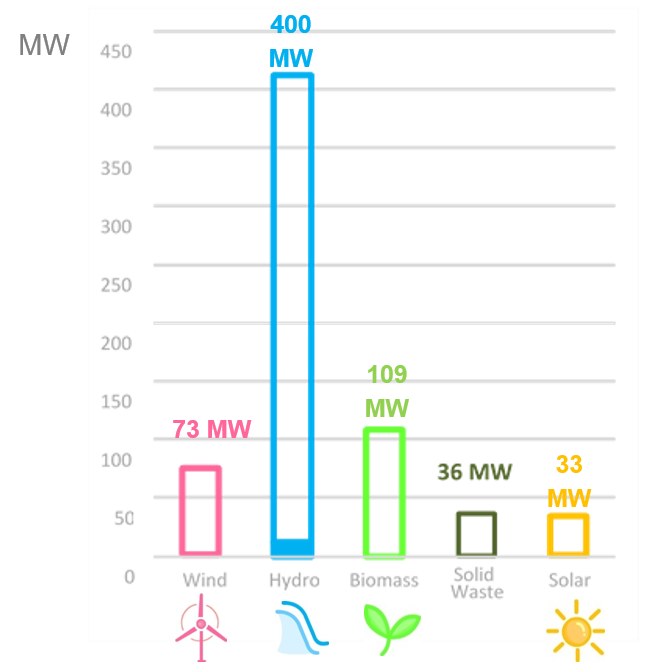The Renewable Energy Development Strategy in Lao PDR has defined the required capacity to achieve the 30% of renewable energy share in 2025. This is the most ambitious target in the Mekong region. In addition to that, the large hydro power plants are not included as a part of this target, as only electricity generated from small plants (up to 15 MW) is considered “renewable”. The transportation sector is also in the focus of this plan, with the aim to reach 10% of biofuels from the total consumption in this sector. The Lao PDR renewable energy targets are illustrated in Figure 4 (The target for installed capacity from renewable energy source in 2025).
The target for installed capacity from renewable energy source in 2025

Source: Renewable Energy Development Strategy in Lao PDR (2011)
Several support mechanisms have been provided by the government in order to achieve the national renewable energy targets as follow:
- Establishing state’s fund for renewable energy development
- Import duty waives for purchasing production machinery, equipment and raw materials
- Divide the profit tax into three different categories: 20%, 10% and 5%. Profit tax exemption is possible for a certain period depending on activities and type of investment.
- Subsidise on unit product price depending on energy type and times period